USB Connector Hardware
USB connections work a bit differently from other data buses like Ethernet. With USB, there’s a “host” device that has “downstream” ports that connect to “upstream” ports on other devices. Only downstream ports provide power, making it safer by reducing the risk of electrical overload or equipment damage.
That’s why USB cables have two different ends—usually one labeled “A” and the other “B.” Each end has its own specific connector shape. USB cables always have a plug at each end: one “A” (or “C”) and one “B” (or “C”), and each plug goes into a matching port, typically on a computer or other electronic device. Some mini and micro USB formats can connect to a special AB port, which accepts either an A or B plug and adjusts its function based on the plug used.
USB connectors come in three main sizes: the standard size for most desktop or portable equipment, the mini size (which was common for mobile devices but was later replaced by the thinner micro size), and finally, the Type-C size, which became the standard with USB 3.2. USB supports five data speeds: Low Speed, Full Speed, High Speed (introduced with USB 2.0), SuperSpeed (introduced with USB 3.0), and SuperSpeed+ (introduced with USB 3.1). Each speed has its own hardware and cabling requirements, so a USB version doesn’t always tell you the speed it supports. Different speeds are shown by names, icons, and sometimes color-coded ports—SuperSpeed ports, for example, are often blue.
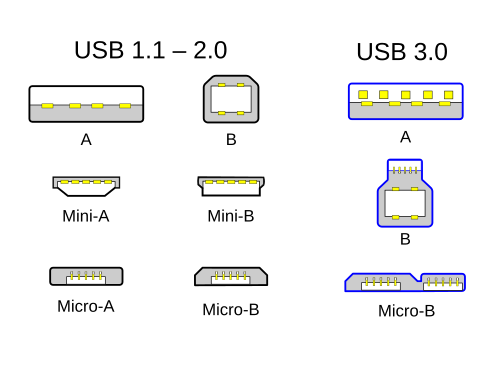
USB Connector properties
USB connectors have some unique properties that help make them both user-friendly and reliable:
- Connector Types and Placement:
USB connectors come in two parts: the receptacle (which is the port on a device) and the plug (which is at the end of a cable). Officially, the plug is sometimes called “male” and the receptacle “female.” One end of a USB cable is typically Type A, while the other end is Type B or Type C, helping prevent accidental power connection between two devices. However, some newer setups (like USB On-The-Go for smartphones) use more flexible arrangements, sometimes requiring non-standard cables or adaptors. - Ease of Use:
USB cables are designed to be easy to plug in correctly. Most USB connectors, except USB-C, fit only one way. USB-C, however, is reversible, so you can insert it either way without worrying. USB connectors hold firmly in place due to the grip of the port, so you don’t need additional screws or clips. - Durability:
USB connectors are built to withstand frequent use. Standard USB ports are designed for at least 1,500 plug-and-unplug cycles. Mini-USB increased this to 5,000 cycles, and Micro-USB and USB-C both offer up to 10,000 cycles. The design places stress on the cable-side of the connection, making the more affordable cable the part that wears out rather than the device’s port. The metal shell around the USB plug helps protect the internal contacts and prevent static buildup. - Compatibility and Fit:
USB standards ensure that connectors from different manufacturers work together. The standard also sets size limits around USB ports so that devices won’t block adjacent ports when plugged in. - Pin Layout (Pinouts):
USB 2.0 uses four pins: two for power and two for data transfer. Mini and micro versions use a fifth pin to identify the device type for USB On-The-Go (OTG) functionality. USB 3.0 has additional wires for faster data transfers, with four extra wires to enable full-duplex data flow, similar to other high-speed data connectors.
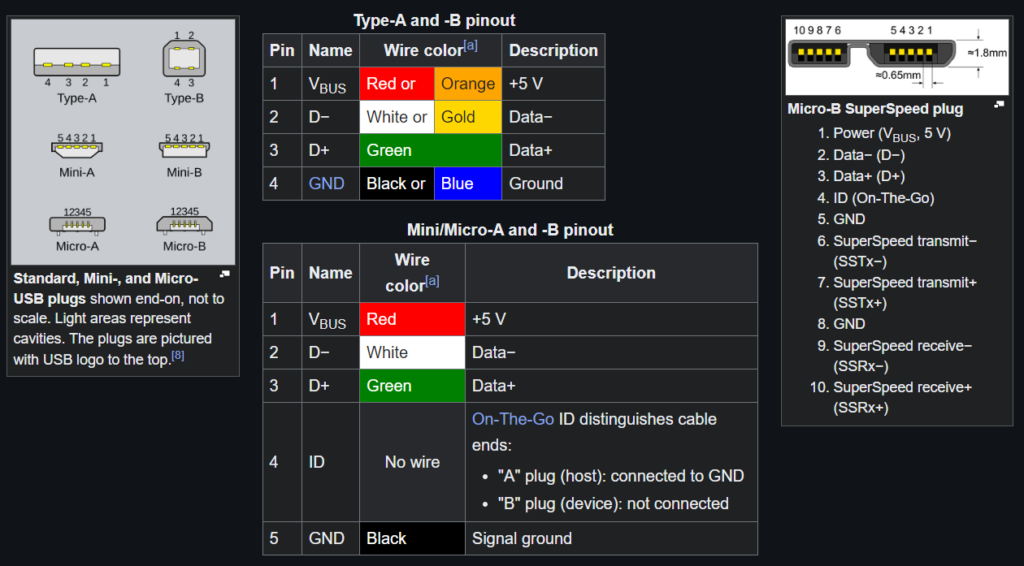
In short, USB connectors are designed to be durable, user-friendly, and compatible across a wide range of devices, making them ideal for everything from quick mobile charging to high-speed data transfer.
| Also Read |
| USB Cable Color Code Brief Guide |
USB Connector Colors

USB Connector types
Basic USB Connector Types
Type-A and Type-B Connectors
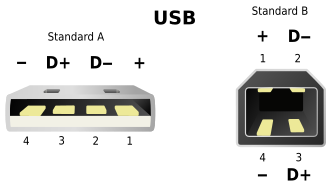
The original USB design has Type-A (rectangular) and Type-B (square) connectors to keep people from connecting two computers directly by mistake. Type-A connectors go into the USB port on a computer or hub, while Type-B connectors usually go into devices like printers. To prevent data transfer until power is stable, the power pins connect first, then the data pins. Some cables, like charging cables, only provide power (with no data pins).
Mini and Micro Connectors
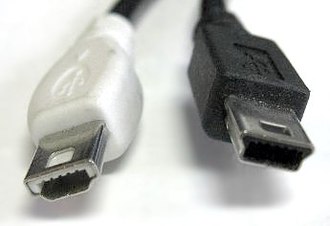
Mini-USB: Originally for compact devices like digital cameras and early smartphones. Mini-A connectors allowed for On-The-Go (OTG) functionality but were phased out in favor of Micro-USB. Mini-B was used for data transfers and charging.
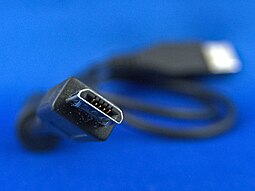
Micro-USB: Replaced Mini-USB, fitting thinner devices like smartphones and tablets. Micro-A and Micro-B plugs are about the same width as Mini-USB but are slimmer. Micro-USB plugs are rated for more uses (about 10,000 cycles) and are designed to reduce wear on the device port itself.
USB 3.x Connectors and Backward Compatibility
USB 3.0 introduced new, faster connectors like Type-A SuperSpeed and Micro-B SuperSpeed, which added extra pins for faster data rates. USB 3.0 Type-A is backward-compatible with older versions, while the USB 3.0 Micro-B plug has a unique design allowing it to work with both USB 2.0 and 3.0 ports. USB 3.1 and beyond offer even faster data transfer, building on this backward compatibility.
USB-C: The All-in-One Connector
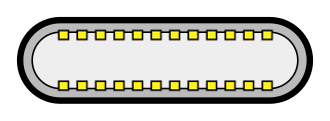
USB-C, introduced in 2014, combines the best features of earlier USB types and adds new capabilities:
- Universal Fit: It’s reversible, meaning you can plug it in either way, and it works with both devices and hosts.
- Data, Power, and Video Transfer: USB-C supports multiple data protocols (like USB, DisplayPort, and Thunderbolt) in one small plug, making it a future-proof connector.
- High Power Delivery: USB-C can deliver higher power levels (up to 3A on the 5V line and even higher with Power Delivery) for fast charging of large devices.
- Intelligent Cable Recognition: USB-C cables can have an “eMarker” chip, which allows the cable to communicate its power and data capabilities.
USB-C is quickly becoming the standard for all kinds of devices, from laptops to smartphones, because of its versatility and ability to replace many types of connectors.
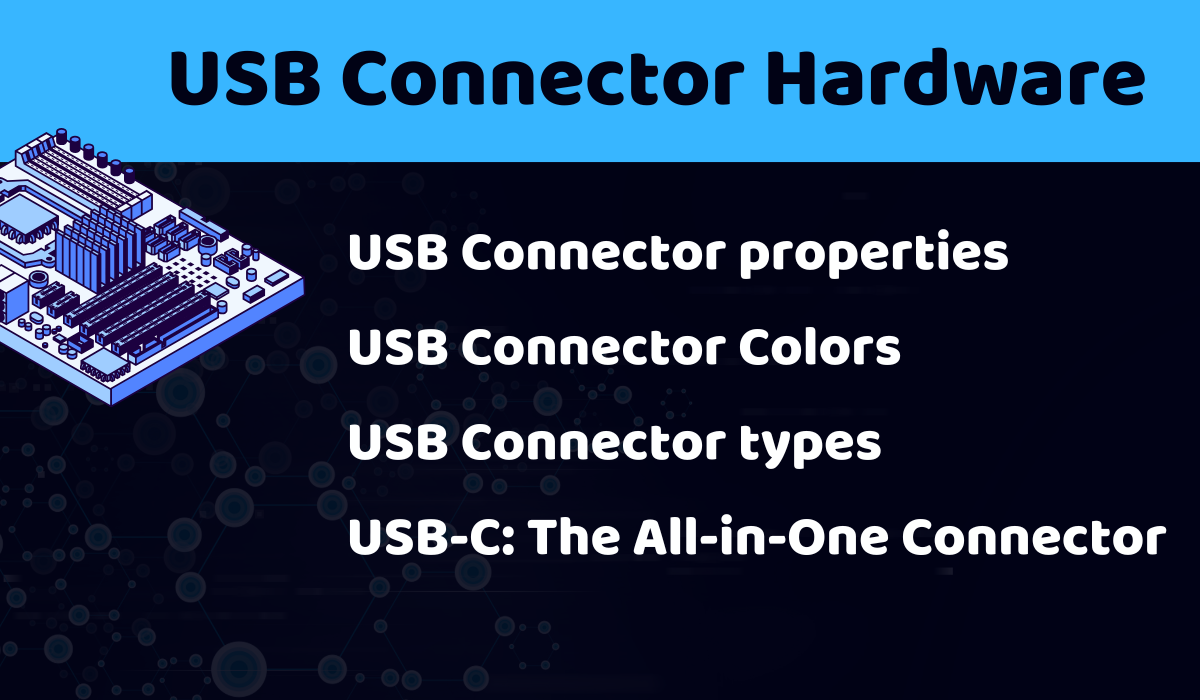
We are currently seeking companies like yours for a potential long-term partnership. Could you kindly share your product offerings along with pricing details? Please contact me on WhatsApp: +44 730 709 4746
currently we don’t have any offerings
Hello,
My name is Komal, and I’m reaching out on behalf of our digital marketing agency. We work with over 100+ websites and specialize in B2B guest posting services.
We are interested in a paid guest posting collaboration with your websites. We’d like to know your pricing and terms for publishing guest posts, and in return, we can also feature your websites within our network — creating a mutually beneficial partnership.
Looking forward to your response and hoping to build a long term collaboration.
Thanks,
Komal